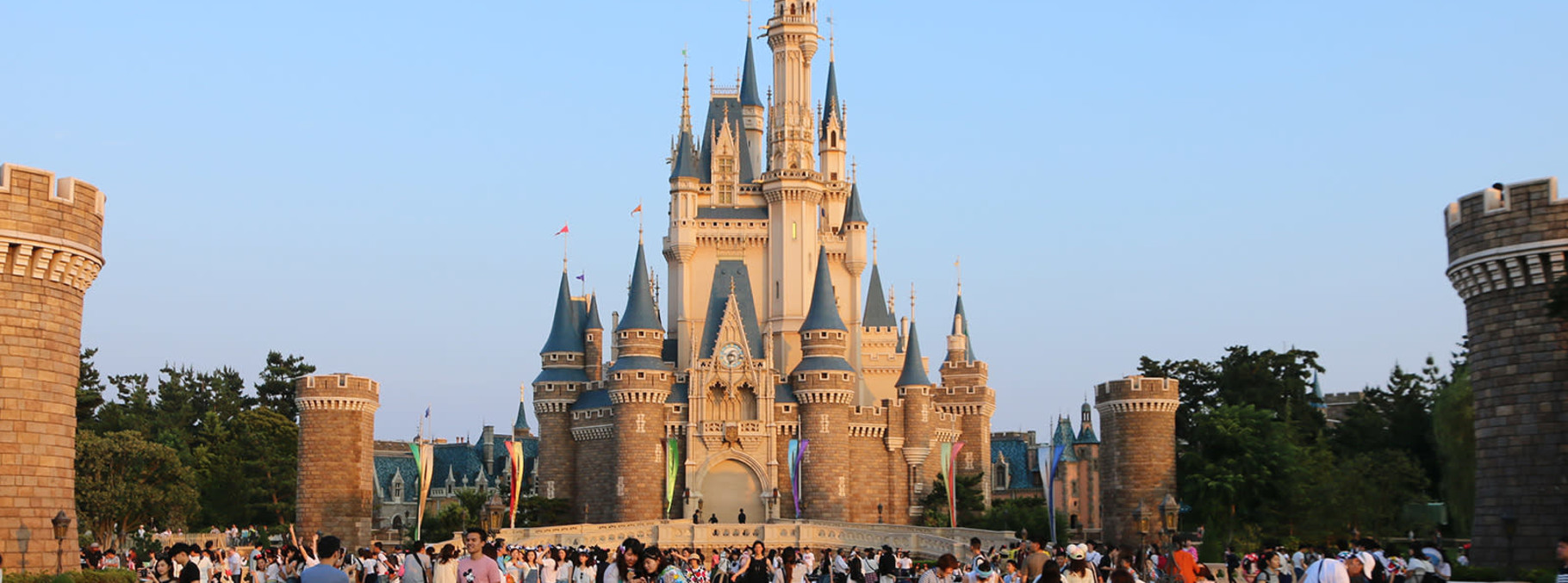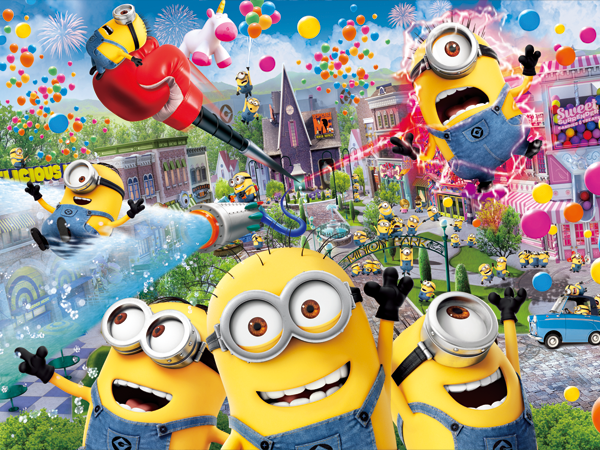Edo-Tokyo Museum

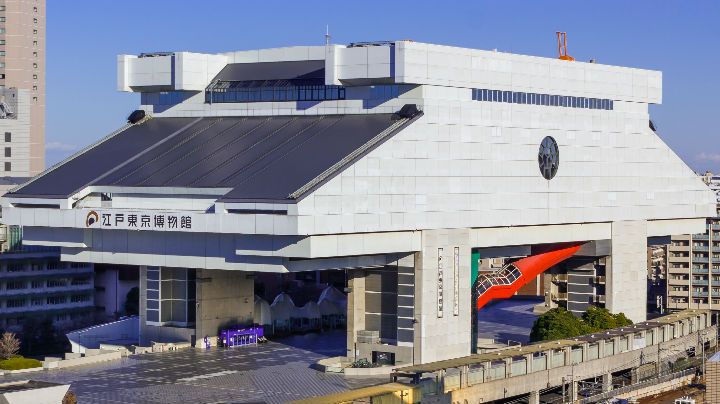
(Source: Wikimedia Commons)
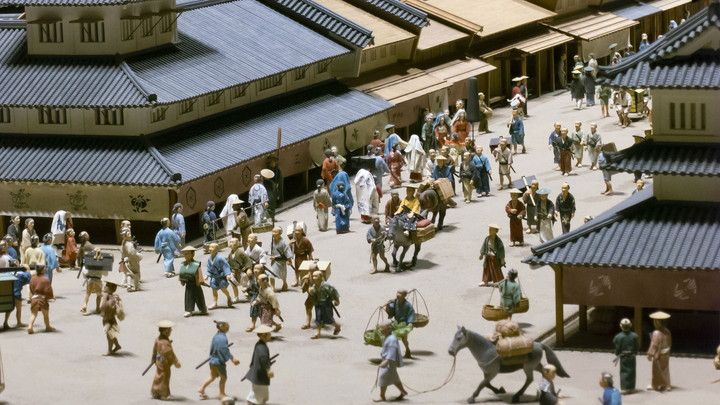
(Source: pixta)
Full-scale Nihonbashi Bridge
You will see the recreated full-scale version of Nihonbashi Bridge right after the entrance to the exhibition room on the 6th floor. The structure has an open ceiling space from the 5th floor to the 6th floor, so you can look over the entire floor from Nihonbashi. The buildings from the Edo and Meiji Period are very compelling. You will almost forget that they are miniature models.
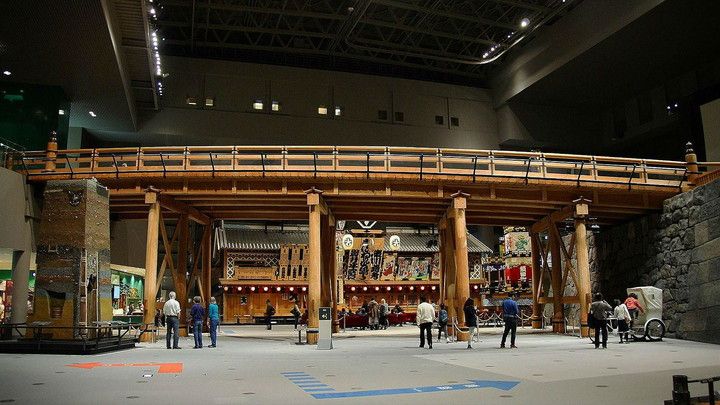
(Source: 下手な横好き)
Theater Nakamura-za
In the center of the 5th floor, an actual size replica of Nakamura-za is displayed. Nakmura-za was a kabuki theater that existed in the early 19th century. Kabuki flourished in the Edo Period as the most popular form of entertainment. Nakamura-za was one of the indispensable places for people in the town Edo at the time.
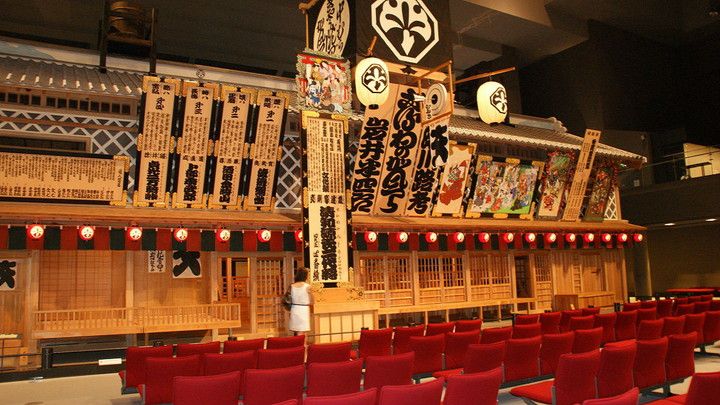
(Source: 江戸東京ときどきロンドン)
Recreated Kabuki Stage
A re-creation of a very popular play of Edo Kabuki, Sukeroku Yukari no Edozakura (The Flower of Edo), is on the display. The same style of costumes and props as the present Kabuki play are displayed on the dolls. You will be amazed how authentic and exquisite the stage is.
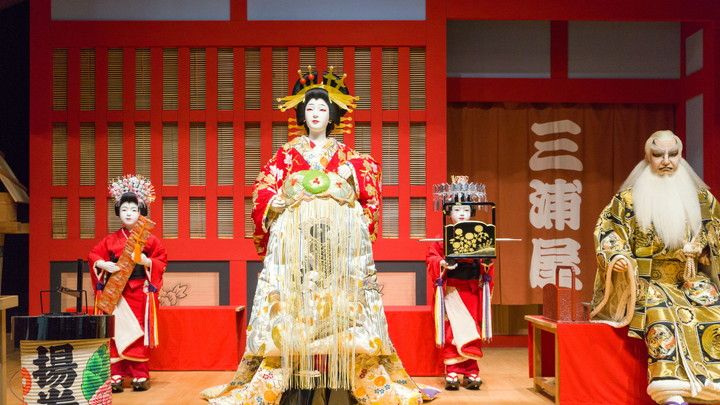
(Source: pixta)
Daimyo Palanquin
A palanquin was one of the methods of transportation in the Edo Period. The style of palanquin varied according to the rank and position of the occupant. Special decorations were given to a daimyo palanquin that carried a daimyo (feudal lord), such as a sliding door. Visitors can ride on this replica of daimyo palanquin in Edo-Tokyo Museum.
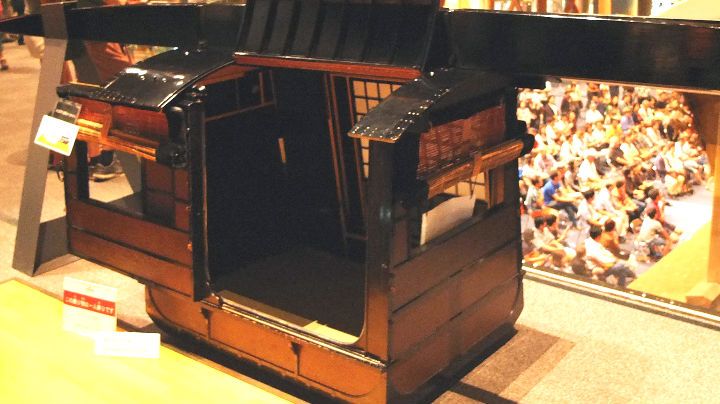
Bar District of Ryogoku
Ryogoku was one of the busiest bar districts in the Edo Period competing with Asakusa. In the Edo Zone on the 5th floor, Ryogoku of the period is intricately re-created with miniature models. Visitors can learn the characteristics and liveliness of Ryogoku.
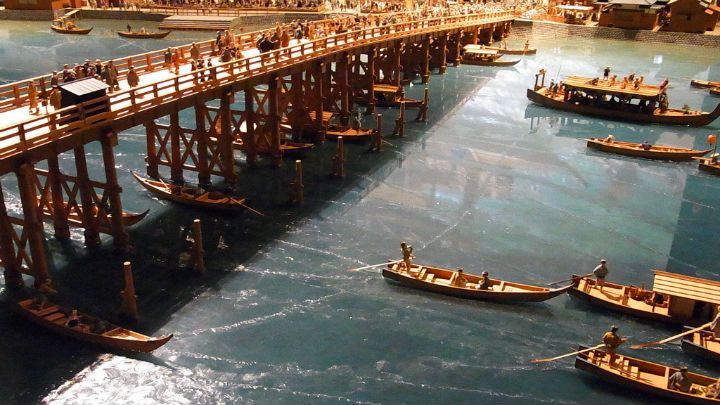
(Source: Wikimedia Commons)
Mitsui Echigoya, the biggest store in Edo
Mitsui Echigoya was the biggest store in Edo and predecessor of the first department store in Japan, Mitsukoshi. The flourishing Mitsui Echigoya is precisely recreated in the Edo Zone on the 5th floor. The miniature model has an entertaining mechanism such that the shop curtains of the entrance move every 15 minutes.

(Source: pixta)

(Source: Wikimedia Commons)

(Source: pixta)
Full-scale Nihonbashi Bridge
You will see the recreated full-scale version of Nihonbashi Bridge right after the entrance to the exhibition room on the 6th floor. The structure has an open ceiling space from the 5th floor to the 6th floor, so you can look over the entire floor from Nihonbashi. The buildings from the Edo and Meiji Period are very compelling. You will almost forget that they are miniature models.

(Source: 下手な横好き)
Theater Nakamura-za
In the center of the 5th floor, an actual size replica of Nakamura-za is displayed. Nakmura-za was a kabuki theater that existed in the early 19th century. Kabuki flourished in the Edo Period as the most popular form of entertainment. Nakamura-za was one of the indispensable places for people in the town Edo at the time.

(Source: 江戸東京ときどきロンドン)
Recreated Kabuki Stage
A re-creation of a very popular play of Edo Kabuki, Sukeroku Yukari no Edozakura (The Flower of Edo), is on the display. The same style of costumes and props as the present Kabuki play are displayed on the dolls. You will be amazed how authentic and exquisite the stage is.

(Source: pixta)
Daimyo Palanquin
A palanquin was one of the methods of transportation in the Edo Period. The style of palanquin varied according to the rank and position of the occupant. Special decorations were given to a daimyo palanquin that carried a daimyo (feudal lord), such as a sliding door. Visitors can ride on this replica of daimyo palanquin in Edo-Tokyo Museum.

Bar District of Ryogoku
Ryogoku was one of the busiest bar districts in the Edo Period competing with Asakusa. In the Edo Zone on the 5th floor, Ryogoku of the period is intricately re-created with miniature models. Visitors can learn the characteristics and liveliness of Ryogoku.

(Source: Wikimedia Commons)
Mitsui Echigoya, the biggest store in Edo
Mitsui Echigoya was the biggest store in Edo and predecessor of the first department store in Japan, Mitsukoshi. The flourishing Mitsui Echigoya is precisely recreated in the Edo Zone on the 5th floor. The miniature model has an entertaining mechanism such that the shop curtains of the entrance move every 15 minutes.

(Source: pixta)



